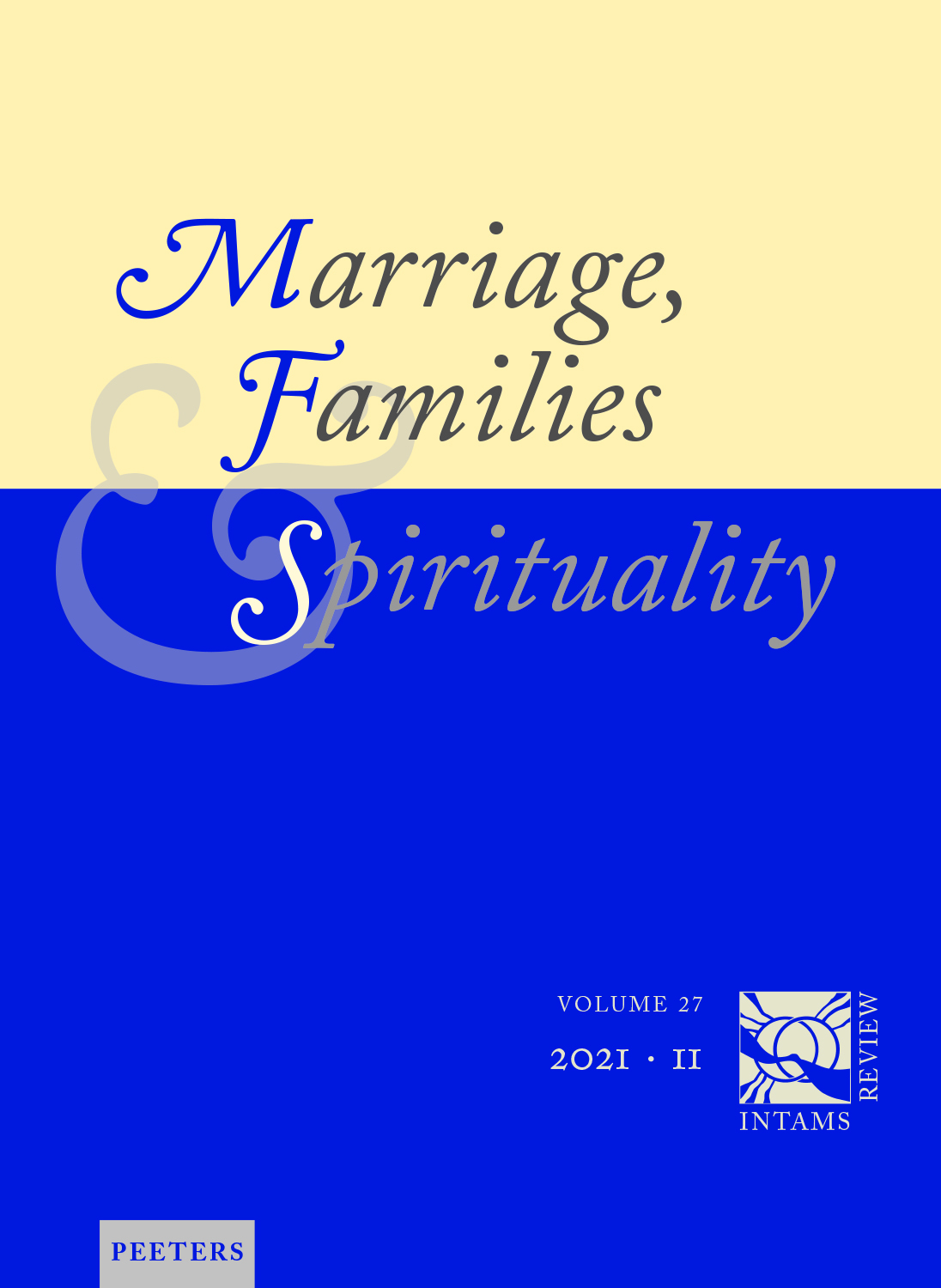 previous article in this issue previous article in this issue | next article in this issue  |

Preview first page |
Document Details : Title: The Church as a Community of Reconciliation Subtitle: In Favor of Allowing Divorced and Remarried Persons to Receive Communion Author(s): SCHOCKENHOFF, Eberhard Journal: Marriage, Families & Spirituality Volume: 27 Issue: 1 Date: 2021 Pages: 71-81 DOI: 10.2143/INT.27.1.3289475 Abstract : The article reflects on the possibility of admitting divorced and civilly remarried Catholics to communion. It was written shortly before the death of the author and is published here posthumously. His point of departure is the 2011 statement by the 'Pfarrer Initiative' in Austria insisting on the possibility of such communion. The article begins by noting that the denial of communion to the civilly remarried is a pressing pastoral problem. The church on the one hand obliges them to participate fully in its life yet bars them from the central act of receiving Christ in the eucharist. The discussion then reviews the biblical perspective. It presents the perspective of Jesus and shows that his particular teaching on marriage and divorce was adjusted by Paul, and that the evangelists added certain exceptions where divorce was allowable. It then turns to the practice of the early church, where, the author says, the desire to adhere to the strict demands of the gospel went hand in hand with compassion for those who failed to do so. Here, there is some evidence that remarriage was tolerated. Next, the article addresses the contemporary response to the difficulties experienced by the civilly remarried. First, there is the proposal to follow the Orthodox in admitting a second or even third remarriage, albeit celebrated in a penitential mode. There has also been a proposal from the perspective of canon law to declare that the marriage is in effect dead, freeing the spouses from the indissoluble bond because that bond has died on its own, as it were, a proposal that is not very feasible. The author then introduces his own way of addressing the issue. Rather than finding a way for the celebration of a second sacramental marriage, the church could and should simply recognize that the civil marriage is built on real matrimonial values, even though it cannot be called a sacramental marriage. Therefore, the situation could be recognized as not sinful in itself, and certainly not a continuing adultery or concubinage. In this way, the civil marriage can be seen as virtuous, and the couple can be invited to full sacramental participation through the testimony of their priest, or on the basis of their own conscience, that their relationship is a good one, regardless of the sinful circumstances that may have led them to it some years prior. The church would then be involved in pastoral care for persons in troubled marriages through the whole process of the attempt at reconciliation, the possible realization that such reconciliation is impossible, the resolution of the guilt involved in the breakup, and the eventual discovery of a new relationship. It could provide needed pastoral care where the church is now simply absent. In the case of those who have experienced failed marriages, the church is experienced only as condemning the situation. The author concludes by encouraging the church to stand instead in care for people in their brokenness as an instrument of God’s healing, even when the original relationship is irretrievable, embracing the persons in the troubled times and rejoicing with them when and if they are able to find love again. Only then can the church be truly a community of reconciliation. |
|


